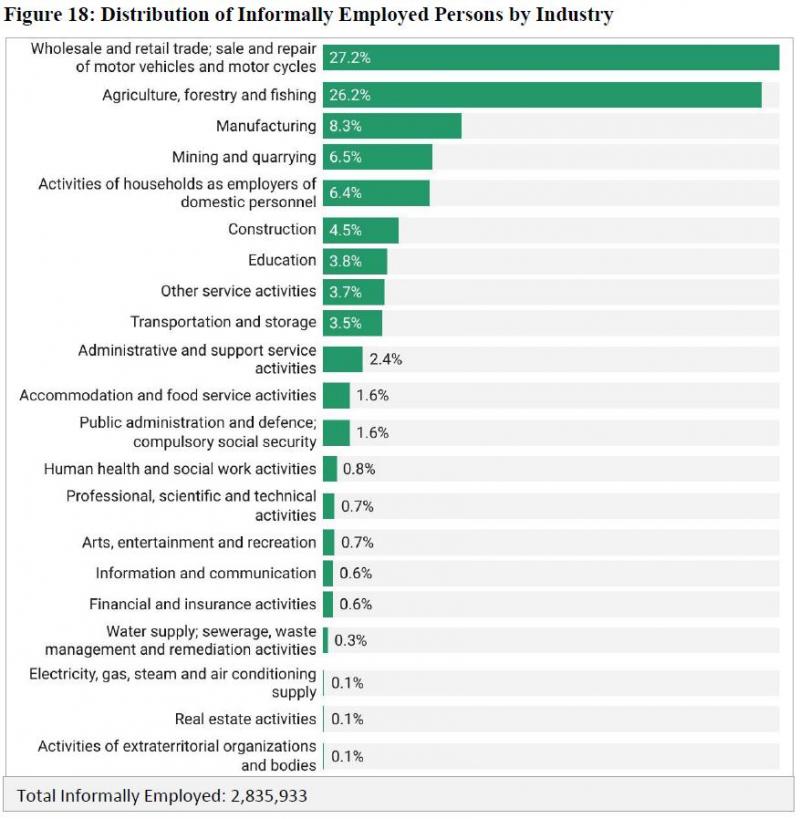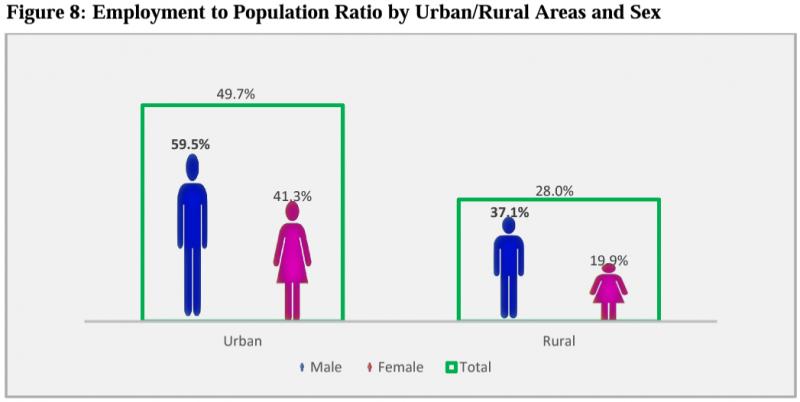For as long as I can remember, Zimbabwe has always had a high unemployment rate. Just how high that rate is has always been a point of debate.
On one side we had Forbes publish the following: Congratulations To Robert Mugabe – Zimbabwe’s Unemployment Rate Now 95% back in 2017. That very same year we had the International Labour Organisation (ILO) report that it was 5.2%. Polar opposites if I’ve ever seen them.
The main reason for the difference comes from how they treat people employed in the informal economy. The Forbes one looks at people on payrolls with taxes and pension deducted by the employer. Anyone not on that list is considered unemployed. That’s obviously inaccurate.
The ILO one says somebody must have been without work, available for work and actively seeking work to be considered unemployed. There are so many people not actively seeking employment after years of failing to land a job, they would not be considered unemployed. That’s also not accurate.
As you can see, an unemployment rate figure means nothing if we don’t know who is considered unemployed.
Unemployed according to Zimstat
Zimstat considers people working in the informal sector to be employed.
If someone works for a ‘company’ or business that is not registered with the Registrar of Companies, they are considered to be informally employed. There are a lot of such ‘companies’ and a lot of people employed by those unregistered businesses.
Zimstat gives the following as examples of people they would consider to be employed:
- People who work for themselves or others in informal businesses
- People who work for their family without being paid, whether they work in formal or informal businesses
- People who are paid to work but do not receive any of the following benefits: a pension fund contribution from their employer, paid annual leave, paid sick leave, or a written contract with their employer
So, that covers street vendors and everyone you know who leaves their abode to go ‘hustle’ as the people say.
The only group not included, which was included before, are subsistence farmers. If a family only grows food for their own consumption, they are not considered employed.
Here is the make-up of the employed:

No prizes for guessing that the informal sector is by far the biggest employer in the country. There is also a significant portion of Zimbabweans just tilling their land for subsistence and selling any excess maize or vegetables. These people are also employed.
That is why you will see that the same report shows that 61% of Zimbabweans earn less than US$12.66 a month.
This is what the informally employed are doing:

The unemployment rate
Now we can appreciate what Zimstat means when they say the national rate of unemployment stands at 19.7%. Or at least that’s what it was in Q2 2023, as Zimstat’s Labour Force Survey shows.
It’s all bad across the board, even though Masvingo is miles ahead of other provinces with a 9.7% unemployment rate.
The situation in Matebeleland North is unacceptable, 34.8% of the population there is unemployed. I imagine that most of them are subsistence farmers, only producing what they eat and so would be considered unemployed. If they sell some of their produce they would be employed.
Let’s zero in on that rural-urban divide:

This is just comparing the number of employed people of working age against the working-age population. There is a huge difference.
49.7% of people who are of working age in the urban areas are employed whilst only 28% are employed in the rural areas. Only 19.9% of females of working age in rural areas are employed and that is depressing.
And that using the generous definition of ’employed’ used by Zimstat. That’s just ridiculous.
To close out this depressing report, I’ll leave you with a quote from the ILO,
The challenge for Zimbabwe is not the quantum of employment but the quality of employment… The majority are employed in the informal economy, characterised by low wages, poor working conditions, little or no social security and representation.
Ain’t that the truth.
Also read:
61% of employed Zimbabweans earning less than $12.66 a month
Breaking down the poverty info released by ZIMSTAT, Zim situation dire
AI could replace 300 million jobs, complete free Google and Microsoft courses to upskill and survive














Comments
5 responses
What’s the average unemployment rate in Southern Africa?
Unemployment is in the 90%. Next you will be telling us inflation is only 50% and not over 800%
So pple can give up working and regarded as seeking employment
Saka maProstitutes are employed
Munoti unemployment rate percentage is below 20% muno munyika ye Zimbabwe here or mukutaura zveku Mars????
Dzimwe nyaya dzinopedza power bcoz zvinobuda pachena kut mutauri wenyaya idzodzo is out of touch with reality.